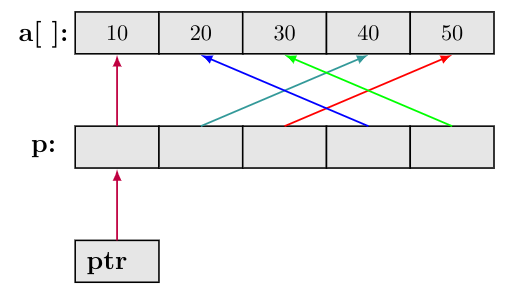static int a[] = {10, 20, 30, 40, 50};
static int *p[] = {a, a+3, a+4, a+1, a+2};
int **ptr = p;

ptr++;

$\text{ptr-p} = \frac{\text{address of ptr} - \text{address of p}}{\text{sizeof(*ptr))}} = 1$
$\text{**ptr = p[2] = *(a+3) = 40}$
printf("%d%d", ptr-p, **ptr); // 140